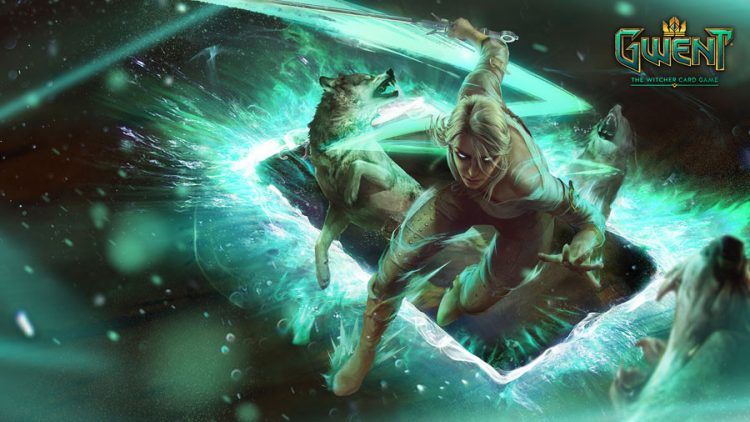If you’re anything like me, you may have avoided Gwent matches during your playthrough of The Witcher 3: Wild Hunt. I was more interested in exploration and odd sidequests and never dedicated much time to playing Gwent. If this was also your approach, you might want to give Gwent another shot in its standalone release.
Easy to learn, but hard to master.
Gwent is a card game set up like a battlefield, and the object is to have a higher score than your opponent at the end of a round. Winning two rounds constitutes a victory. Cards have different number values assigned to them, and your score is calculated by adding the values of the cards together. However, there are cards without assigned values which instead have certain abilities. Weather cards, for example, can have negative effects on your opponent’s forces and sometimes your own, which makes developing a strategy important. Cards are then placed into one of three rows – melee, ranged, or siege.
There are five factions to choose from based on the original game – Nilfgaard, Monsters, Skellige, Northern Realms, and Scoia’tael. The factions have different cards and abilities, but there are neutral cards which appear in all decks. Players may use a starter deck for any of the above factions, or customize their own when they become more familiar with the game.
It quickly becomes clear that placing all of one’s valuable cards on the board at once is a dangerous strategy. Ten cards are drawn each game, two additional cards are drawn between the first and second match, and only one additional card before the final match. Players may pass during a match to save their cards for the next round, which may increase your chance of victory in the long run.
Features included in the technical beta:
- Singleplayer tutorial walks you through the rules/ins & outs.
- Practice Gwent by playing against an AI
- Connect to random players online
- Build your own deck or select a pre-made starter deck.
I encountered only a few issues with the beta. The game crashed once when I tried to open it, but opened successfully after a second try. There were also a few times when it was unable to connect me to an online match, but I could usually get it to work after multiple tries. Additionally, this was only a problem on Friday, the first day of the technical beta. During the other two days, I was able to connect to an online match on the first try. Apart from these issues, the game ran smoothly. I am looking forward to the final product after the time I spent with it during the technical beta.
CD Projekt RED has not yet confirmed a release date for Gwent: The Witcher Card Game. In addition to a PS4 release, it will also be available on Xbox One and PC. So even if you do not have a PS4, look for other opportunities to play Gwent if you’re a fan of card games, The Witcher, or both.
*Screenshots courtesy of the official Gwent: The Witcher Card Game website. There are minor differences between the PS4 technical beta and the photos on the site, but they are mostly representative of my experience with the beta.




